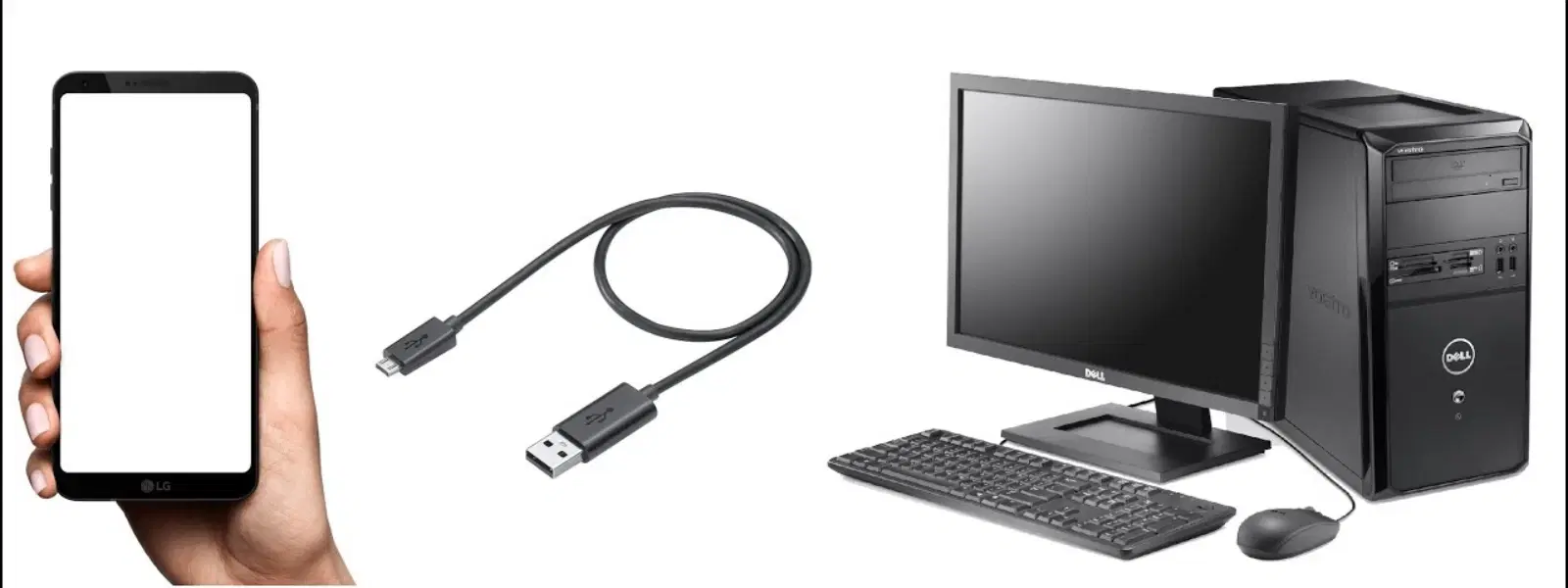
Consumer Electronics
•03 min read
Imagine seamlessly sharing your smartphone's mobile data with your PC for work, gaming, or streaming. This guide provides a clear and practical walkthrough on how to connect mobile data to your PC via USB, using straightforward steps that cater to both Android smartphones and Windows devices. By reading on, you will gain the confidence to enable USB tethering, address common connectivity issues, and enjoy the benefits of a stable, high-speed internet connection while on the move. Plus, discover how Tata Neu and Croma products can enhance your connectivity experience with added benefits like Express Delivery and NeuCoins rewards.
USB tethering is a method that allows you to share your mobile data with your PC via a USB connection. This means turning your smartphone into a modem and using your mobile data when a traditional broadband connection is unavailable. Compared to Wi-Fi hotspots or Bluetooth tethering, a USB connection often provides a more stable and faster internet experience, particularly when you are multitasking or streaming content.
To enjoy this service, you will need a smartphone with an active mobile data plan, a reliable USB cable, and a PC or laptop ready to accept the connection. This setup works flawlessly with Android phones and Windows computers, ensuring you can remain productive wherever you are. Earn up to 5% NeuCoins on Tata Neu or at Croma stores when purchasing high-quality USB cables or other accessories to support your tethering setup.
The journey to connecting your mobile data begins by setting up your smartphone correctly. First, ensure that mobile data is enabled on your phone. On most Android devices, you can find the necessary settings under 'Hotspot & Tethering'. Once confirmed, the next step is linking your phone to your PC using a high-quality USB cable. A stable physical connection is crucial for reducing interruptions and maximising performance. If you’re using a Windows PC, check for operating system updates or driver updates to ensure compatibility and stability.
Now, let’s walk through the tethering setup process. Start by navigating to Settings on your Android device, then tap on Network & Internet followed by Hotspot & Tethering. Here, you will see an option for USB Tethering. Connect your phone to your PC via the USB cable and switch on the USB Tethering option. Once enabled, your PC should automatically identify your phone as a modem, allowing it to use your mobile data for browsing and other tasks.
If your PC does not promptly detect the connection, a quick check of device drivers or USB settings can resolve the issue. Sometimes, updating drivers can make a significant difference in performance and stability.
Pro Tip: Boost Your Tethering Efficiency
Did you know? Using USB tethering typically consumes less battery compared to Wi-Fi hotspots. Moreover, it offers faster and more reliable speeds, making it an excellent option when streaming content or managing multiple applications simultaneously.
Using your smartphone as a modem is not only convenient but also a practical solution during travel or remote work. By understanding that your phone essentially becomes a portable internet provider, you can plan your work or leisure activities without being tethered to a traditional connection.
For the best performance, consider closing unnecessary background apps on your smartphone and ensuring that you use a USB 3.0 port if available. These simple adjustments can significantly enhance your internet experience and provide a faster connection. Additionally, explore Tata Neu and Croma’s range of tech accessories designed to optimise your connectivity, including high-speed USB cables and power banks with Express Delivery options.
While this guide focuses on USB tethering, it is worth noting that other methods like Wi-Fi hotspots and Bluetooth tethering exist. However, if stability and speed are your priorities, USB tethering remains a top choice.
Connect your phone to the PC using a USB cable and enable USB tethering in your phone’s settings under 'Hotspot & Tethering'.
Yes, you can achieve this either through USB tethering or alternative methods such as Wi-Fi hotspots or Bluetooth tethering.
For internet sharing, simply enable USB tethering. For transferring files, connect your phone via USB and select 'File Transfer' mode.
Ensure that your USB cable is in good condition, that USB tethering is active, and consider updating your PC’s device drivers to resolve any issues.
This process, known as reverse tethering, requires specific software or additional settings and is different from mobile-to-PC USB tethering.
Sharing your mobile data with a PC via USB is a straightforward process that can empower you with a fast, reliable connection whenever you need it most. Whether for work-related tasks or leisure activities such as streaming or gaming, the ability to seamlessly connect your mobile data ensures you never miss a beat. Embracing technology that transforms your smartphone into a portable modem demonstrates the convenience and versatility of modern consumer electronics. Enjoy the effortless connectivity and extra benefits of rewards like NeuCoins on Tata Neu as you explore innovative ways to shop smartly and stay connected.